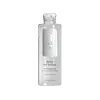What's inside
What's inside
 Key Ingredients
Key Ingredients

 Benefits
Benefits

 Concerns
Concerns

 Ingredients Side-by-side
Ingredients Side-by-side

Water
Skin ConditioningSodium Lauroyl Methyl Isethionate
CleansingAloe Barbadensis Leaf Juice
Skin ConditioningCocamidopropyl Betaine
CleansingSodium Methyl Oleoyl Taurate
CleansingSodium Cocoyl Isethionate
CleansingPropanediol
SolventNiacinamide
SmoothingSodium Hyaluronate
HumectantPanthenol
Skin ConditioningApium Graveolens Seed Extract
AntioxidantPersea Gratissima Oil
Skin ConditioningGlycerin
HumectantDisodium Cocoyl Glutamate
CleansingCaprylic/Capric Triglyceride
MaskingCitric Acid
BufferingCaprylhydroxamic Acid
Sodium Chloride
Masking1,2-Hexanediol
Skin ConditioningCaprylyl Glycol
EmollientSodium Benzoate
MaskingWater, Sodium Lauroyl Methyl Isethionate, Aloe Barbadensis Leaf Juice, Cocamidopropyl Betaine, Sodium Methyl Oleoyl Taurate, Sodium Cocoyl Isethionate, Propanediol, Niacinamide, Sodium Hyaluronate, Panthenol, Apium Graveolens Seed Extract, Persea Gratissima Oil, Glycerin, Disodium Cocoyl Glutamate, Caprylic/Capric Triglyceride, Citric Acid, Caprylhydroxamic Acid, Sodium Chloride, 1,2-Hexanediol, Caprylyl Glycol, Sodium Benzoate
Water
Skin ConditioningCocamidopropyl Betaine
CleansingSodium C14-16 Olefin Sulfonate
CleansingSodium Lauroyl Methyl Isethionate
CleansingGalactoarabinan
Salvia Hispanica Seed Extract
EmollientGlycerin
HumectantTrehalose
HumectantXylitol
HumectantPanthenol
Skin ConditioningCamellia Sinensis Leaf Extract
AntimicrobialSodium Phosphate
BufferingCaprylyl/Capryl Glucoside
CleansingNiacin
SmoothingCitrus Junos Extract
AntioxidantPanax Ginseng Extract
AntioxidantRosmarinus Officinalis Extract
AntimicrobialBiotin
AntiseborrhoeicSodium Cocoyl Isethionate
CleansingCaprylyl Glycol
EmollientGlyceryl Laurate
EmollientGlyceryl Undecylenate
EmollientWater, Cocamidopropyl Betaine, Sodium C14-16 Olefin Sulfonate, Sodium Lauroyl Methyl Isethionate, Galactoarabinan, Salvia Hispanica Seed Extract, Glycerin, Trehalose, Xylitol, Panthenol, Camellia Sinensis Leaf Extract, Sodium Phosphate, Caprylyl/Capryl Glucoside, Niacin, Citrus Junos Extract, Panax Ginseng Extract, Rosmarinus Officinalis Extract, Biotin, Sodium Cocoyl Isethionate, Caprylyl Glycol, Glyceryl Laurate, Glyceryl Undecylenate
Ingredients Explained
These ingredients are found in both products.
Ingredients higher up in an ingredient list are typically present in a larger amount.
Caprylyl Glycol is a humectant and emollient, meaning it attracts and preserves moisture.
It is a common ingredient in many products, especially those designed to hydrate skin. The primary benefits are retaining moisture, skin softening, and promoting a healthy skin barrier.
Though Caprylyl Glycol is an alcohol derived from fatty acids, it is not the kind that can dry out skin.
This ingredient is also used as a preservative to extend the life of products. It has slight antimicrobial properties.
Learn more about Caprylyl GlycolCocamidopropyl Betaine is a fatty acid created by mixing similar compounds in coconut oil and dimethylaminopropylamine, a compound with two amino groups.
This ingredient is a surfactant and cleanser. It helps gather the dirt, pollutants, and other impurities in your skin to be washed away. It also helps thicken a product and make the texture more creamy.
Being created from coconut oil means Cocamidopropyl Betaine is hydrating for the skin.
While Cocamidopropyl Betaine was believed to be an allergen, a study from 2012 disproved this. It found two compounds in unpure Cocamidopropyl Betaine to be the irritants: aminoamide and 3-dimethylaminopropylamine. High-grade and pure Cocamidopropyl Betaine did not induce allergic reactions during this study.
Learn more about Cocamidopropyl BetaineGlycerin is already naturally found in your skin. It helps moisturize and protect your skin.
A study from 2016 found glycerin to be more effective as a humectant than AHAs and hyaluronic acid.
As a humectant, it helps the skin stay hydrated by pulling moisture to your skin. The low molecular weight of glycerin allows it to pull moisture into the deeper layers of your skin.
Hydrated skin improves your skin barrier; Your skin barrier helps protect against irritants and bacteria.
Glycerin has also been found to have antimicrobial and antiviral properties. Due to these properties, glycerin is often used in wound and burn treatments.
In cosmetics, glycerin is usually derived from plants such as soybean or palm. However, it can also be sourced from animals, such as tallow or animal fat.
This ingredient is organic, colorless, odorless, and non-toxic.
Glycerin is the name for this ingredient in American English. British English uses Glycerol/Glycerine.
Learn more about GlycerinPanthenol is a common ingredient that helps hydrate and soothe the skin. It is found naturally in our skin and hair.
There are two forms of panthenol: D and L.
D-panthenol is also known as dexpanthenol. Most cosmetics use dexpanthenol or a mixture of D and L-panthenol.
Panthenol is famous due to its ability to go deeper into the skin's layers. Using this ingredient has numerous pros (and no cons):
Like hyaluronic acid, panthenol is a humectant. Humectants are able to bind and hold large amounts of water to keep skin hydrated.
This ingredient works well for wound healing. It works by increasing tissue in the wound and helps close open wounds.
Once oxidized, panthenol converts to pantothenic acid. Panthothenic acid is found in all living cells.
This ingredient is also referred to as pro-vitamin B5.
Learn more about PanthenolSodium cocoyl isethionate is a natural ingredient from coconut oil. It is an ultra gentle cleanser that gives a nice foam without drying the skin or impacting the skin barrier.
The amount of foam created depends on the amount of sodium cocoyl isethionate used in the product.
This ingredient also helps improve the spreadability of a product.
Learn more about Sodium Cocoyl IsethionateSodium Lauroyl Methyl Isethionate is a cleansing ingredient. It is a surfactant, meaning it helps gather dirt, oil, and other pollutants. This helps them be rinsed away easily.
Water. It's the most common cosmetic ingredient of all. You'll usually see it at the top of ingredient lists, meaning that it makes up the largest part of the product.
So why is it so popular? Water most often acts as a solvent - this means that it helps dissolve other ingredients into the formulation.
You'll also recognize water as that liquid we all need to stay alive. If you see this, drink a glass of water. Stay hydrated!
Learn more about Water